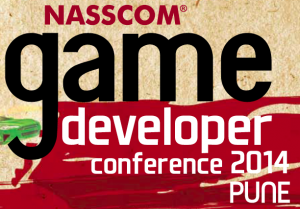2014, has been the year where gaming has truly flourished in India. Gamers have emerged from household kitchens, remote villages and even from kitty parties. Gaming as a word in India has changed and smartphones have become the new consoles where you’ll find gamers playing for hours. The ones who used to dissuade you earlier from playing them have now become addicted to them. One can now find moms and dads clutching their phones trying to out-win each other and sometime even beat their own high-scores. Even grandparents in some households are addicted to these games and this goes to show how gaming in India has evolved since smartphones have become all the rage.
The estimated $300 million Indian gaming industry is dependent on the mobile engine to keep it chugging. Currently, a humungous 61 per cent of game players are doing so on their mobile handsets, while 38 per cent stay plonked in front of their PCs running through digital mazes, while just a thin sliver of 1 per cent are playing games on their high end expensive consoles. Console gaming is unlikely to take off unless pricing touches affordable levels for Indians.
India is now the third biggest smartphone market in the world, but it is quite likely to jump to the second spot in the next six months leaving the US behind at No 3. Of the 820 million or so active mobile subscribers nationally, 100 million or more have smart phones. And they are using their hand sets for surfing, buying all kinds of goodies online – something which led to a spurt in internet consumption on the mobile in 2014. Mobile manufacturers such as Lava, Micromax, Xiomi have helped accelerate phone acquisition to a large extent as they have kept pricing affordable; a low end smartphone carries a sticker price of only Rs 4,000 while a high end one can set you back by Rs 72,000.
With handsets flying off the shelves, there is no doubt that mobile gaming is going to speed up even further. Where there were a mere 80 studios in 2012, India has now become home to over 200 game studios in 2014, most of which cater to mobile game audiences. Big gaming studios like Ubisoft, EA and Rovio have their offices in India and other big studios are seeing India as the next big market after China.
So let’s look at some of the hits and misses of the year gone by in a quick flashback
Game Jams
 The number of Game Jams that took place this year was an encouraging sight with kids and professionals turning up in big numbers to Jam and prove their mettle. One such Game Jam organised by Mindbox in association with Nasscom was ‘GameJam Titans’ which was held across six cities in India and AnimationXpress was a proud partner for this initiative. With over 1,000 people participating across two categories: Student and College/Professional; students showed much enthusiasm and experimented with different game design and game mechanics, it was really wonderful to see their keenness to pursue gaming as a career going forward. Twelve winners from these Game Jams travelled to Pune to showcase their game at NASSCOM Game Developers Conference (NGDC), which won much applause from the artists and developers from various big and small studios. There were also other Game Jams that were organised during this year including B.Y.O.G (Build Your Own Game) [a NASSCOM initiative] – a 48 hour online Game Jam where the developers have to make a game based on the theme provided by the organisers on the day of the competition. The online event had participants from Spain, Taiwan, and Canada among other countries. Another initiative was Game Showdown by Anibrain School of Media and Design, which was a tweakedversion of Game Jams, where you only had to prepare a presentation on the game theme and explain how you would make it for different platforms.
The number of Game Jams that took place this year was an encouraging sight with kids and professionals turning up in big numbers to Jam and prove their mettle. One such Game Jam organised by Mindbox in association with Nasscom was ‘GameJam Titans’ which was held across six cities in India and AnimationXpress was a proud partner for this initiative. With over 1,000 people participating across two categories: Student and College/Professional; students showed much enthusiasm and experimented with different game design and game mechanics, it was really wonderful to see their keenness to pursue gaming as a career going forward. Twelve winners from these Game Jams travelled to Pune to showcase their game at NASSCOM Game Developers Conference (NGDC), which won much applause from the artists and developers from various big and small studios. There were also other Game Jams that were organised during this year including B.Y.O.G (Build Your Own Game) [a NASSCOM initiative] – a 48 hour online Game Jam where the developers have to make a game based on the theme provided by the organisers on the day of the competition. The online event had participants from Spain, Taiwan, and Canada among other countries. Another initiative was Game Showdown by Anibrain School of Media and Design, which was a tweakedversion of Game Jams, where you only had to prepare a presentation on the game theme and explain how you would make it for different platforms.
Game Jams showed that parents too have started showing interest in the gaming industry providing the support and encouragement to excel in the field other than pursuing mundane day jobs of becoming an engineer or doctor. Institutes like DSK SupinfoGame Rubika International Campus, Anibrain School of Media and Design and MAAC among many others have also steered focus on game development as specialised courses, which will help the kids understand better about the gaming industry from industry veterans and how to go about it starting from an early age.
Movies inspiring Games
 We also saw a lot of movies being ‘gamified’. This was used as a strong marketing tool as well for movies but these games garnered a very good response at the market space with some of them achieving download numbers as high as 5-7 million – case in point Dhoom 3. The one thing working for these games is that they already have a recognised face promoting them and are widely accepted among the masses. Movie based games are a good way to have audience notice your studio. It helps in user acquisition so that the players look forward to your next game. Big studios in India have started out with making games based on movies. Studios like Reliance Games have created games like Singham Returns, Real Steel and Pacific Rim. Vroovy, the mobile gaming branch of Hungama recently came up with Happy New Year and Indiagames have been instrumental in bringing Bang Bang and PK to the small screen in the form of a mobile game.
We also saw a lot of movies being ‘gamified’. This was used as a strong marketing tool as well for movies but these games garnered a very good response at the market space with some of them achieving download numbers as high as 5-7 million – case in point Dhoom 3. The one thing working for these games is that they already have a recognised face promoting them and are widely accepted among the masses. Movie based games are a good way to have audience notice your studio. It helps in user acquisition so that the players look forward to your next game. Big studios in India have started out with making games based on movies. Studios like Reliance Games have created games like Singham Returns, Real Steel and Pacific Rim. Vroovy, the mobile gaming branch of Hungama recently came up with Happy New Year and Indiagames have been instrumental in bringing Bang Bang and PK to the small screen in the form of a mobile game.
Monetisation
India as a market has been primarily a F2P (free-to-play) market with monetising done via ads and in-app purchases in the games. Premium game models work here but on a very small scale where players majorly have been downloading the premium products on Apple devices. India has not been able to solve the monetizing puzzle and it has been a difficult market for developers, due to the lack of knowledge and aversion to spending using digital currencies. In-app purchases and Premium games have been a tough nut to crack. But this could change with mobile networks coming into this space and allowing game purchases to be added to post-paid bills, and even be made through pre-paid balances. What will help hoick revenues further is mobile service providers or gaming platforms signing deals with in-app billing solution providers like Fortumo, Pokkt and PingOO. Games like Monument Valley and Thomas was Alone have done really well globally with premium models.
Acquisitions
Globally, the biggest acquisition that took place was Microsoft snaring Minecraft creator, Majong for $2.5 billion. The acquisition will help Microsoft to enter the mobile gaming space and attract a large demographic of gamers, majority of them being youth.
Another big catch was when ‘Facebook’ acquired ‘Oculus VR’, the creators of Oculus Rift for $2 billion. Facebook’s acquisition puts the social media giant at the forefront for what is the next big thing in the gaming world – Virtual Reality Technology. Although this is the next big step for the social media network, it was largely panned by industry personalities like Markus Persson, the creator of Minecraft, who heavily criticized the deal on his blog and cancelled an Oculus version of the game. John Lanier, who found the first VR company, VPL Research in 1983 was another critic to have criticised Oculus on the said deal.
Another big acquisition was Amazon buying online game streaming site ‘Twitch’ for $970 million. Amazon is betting big on content and wanted to acquire a video sharing website that could give stiff competition to the likes of Netflix and Google’s YouTube. Although, Twitch is only streaming games, allowing spectators to watch others play, the championship held for Riot Game’s League of Legends was watched by 32 million people in October. Amazon also recently purchased GoodGame, a company that owns teams of video-game players and hosts live gaming tournaments.
In India, Delhi based gaming studio Lakshya Digital was picked up for $4 million this year. The studio was acquired by Dublin based Keywords Studio, though it will continue to function independently. Lakshya Digital is a game studio, which provides outsourcing services in the game art and development department.
Incubations
The industry is showing promise and to back this promise big names from the industry have started incubating the indies to help them live their dream.
Nazara Technologies from its game seed fund which was setup last year invested in mobile gaming startup HashCube. Along with Ah! Ventures, San Francisco based entrepreneur Perry LaForge, existing investors Indian Angel Network and Blume Ventures, Nazara pumped in Rs 4.2 crore into HashCube. The latter’s Quest series of games have been a huge success on Facebook, Android and iOS platforms and Nazara plans to globally market these following the investment.
Dhruva Interactive too has started an incubation facility where it plans to nurture mobile game developers after taking a 3-7 per cent stake in the game in return for mentorship and space. It plans to offer incubation to 7-8 start-ups.
NASSCOM 10,000 Start-ups, NASSCOM Gaming Forum and Dhruva Interactive’ s Gametantra also entered into an understanding that gaming start-ups which apply to NASSCOM 10,000 Start-ups will receive mentoring and incubation facilities at the Bengaluru centre; providing them with office space and mentorship.
Reliance Games has also shown intent to commence an incubation facility in its Pune studios, where the developers will get all the necessary help from the in-house developers and artists to make a successful game.
Big Shout-Outs
One of the many successful stories for an Indian gaming studio has been Reliance Games which has been successful in raking in big numbers for ‘Real Steel World Boxing’. Yes some may argue that it has the advantage of having the Reliance ‘tag’ and a big budget studios backing but it has gone out of the way to maintain the franchise even after so many years when the movie first came out.
Talking of Real Steel, another ‘Real’ game that did great this year was Real Cricket 14. Created by Nautilus Mobile, an indie studio based out of Hyderabad, the 2D game created a lot buzz in the cricket crazy country with authentic looking cricket shots and simple bowling options.
Octro Inc. – the developer behind ‘Teen Patti’ was all over the gaming scene this year with its games and as an added bonus received$15 million in funding from Sequoia Capital.
 Another shoutout goes to the ‘Unrest’ video game by gaming studio Pyrodactyl Games. The game is a role-playing one which takes place in ancient India. The point and click adventure has a large part of itsgame play based on the narrative choices you make, that influences your story and the environment around you. The game has been receiving positive reviews from global game websites as well.
Another shoutout goes to the ‘Unrest’ video game by gaming studio Pyrodactyl Games. The game is a role-playing one which takes place in ancient India. The point and click adventure has a large part of itsgame play based on the narrative choices you make, that influences your story and the environment around you. The game has been receiving positive reviews from global game websites as well.
Along with Unrest, TinyBuid(publisher) and QuickTequilla’s (developer)Lovely Planet and Ogre Head Studio’s Asura have also been some of the highlights this year .Lovely Planet, a first person shooter, received rave reviews from various gaming websites globally with reviewers calling the game ‘the shooter with a difference’. Asura, the hack and slash game is still in the beta stage but has been able to gather much buzz.
The NASSCOM Gaming Forum took its first delegation of a strong 20 member squad to Casual Connect Singapore. Casual Connect Asia brought together over 900 top developers, publishers and distributors involved in the gaming industry to create networking opportunities among fellow gaming enthusiasts. ‘Petite’, developed by 20 years old Asar, from Seven Summits Studio won the Best Story at the summit.
The Election Commission of India got a video game developed titled “Get! Set! Vote!” amongst a series of edutainment materials on voter awareness and education. The game has been created to broadly engage citizens of all age groups on concepts such as democracy and the electoral process.
NGDC which is held every year is the Mecca for all the Indian game developers and artists. People come here and experience each other’s games and it is a big game party. NASSCOM has been instrumental in bringing talent from all across the country and even big names like Bob Bates from overseas. More such forums are required, even if at a smaller scale, where the focus is on a city and where independent developers could meet and share ideas; play each other’s games and give feedback as to what can be done to achieve a roaring success. The indie community needs to interact more and help one another to reach on a global scale.
YouTube Channels have been another source of entertainment for the gamers where commentators like ‘PewDiePie’, penguinz0 (Cr1TiKal) and AVGN (Angry Video Game Nerd a.k.a James Rolfe) have managed to earn big bucks by sharing their experience on the website while playing the games. Having your game featured on any of these channels will reward you with truck-load of downloads.
Lows
‘GamerGate’ highlighted the ugly side of the gaming industry in its treatment of women. The controversy concerned the corruption in video game journalism and the culture war against women and the diversification of gaming culture.
With the rise of free to play games, the market has been flooded with average games and what has been damaging for quality indie developers is that their games have been overshadowed by these games that otherwise clone a successful game and tweak it a little.
Half-baked games like recent Assassin’s Creed: Unity have been published and delivered to gamers and this has led to criticism from across the globe. With games having technical glitches and bugs that can’t be ignored, it has left a poor taste in gamer’s mouths. Games like ‘Destiny’ which were touted to be the ‘game of the year’; too had major issues, likea missing plot and lack of gameplay.

